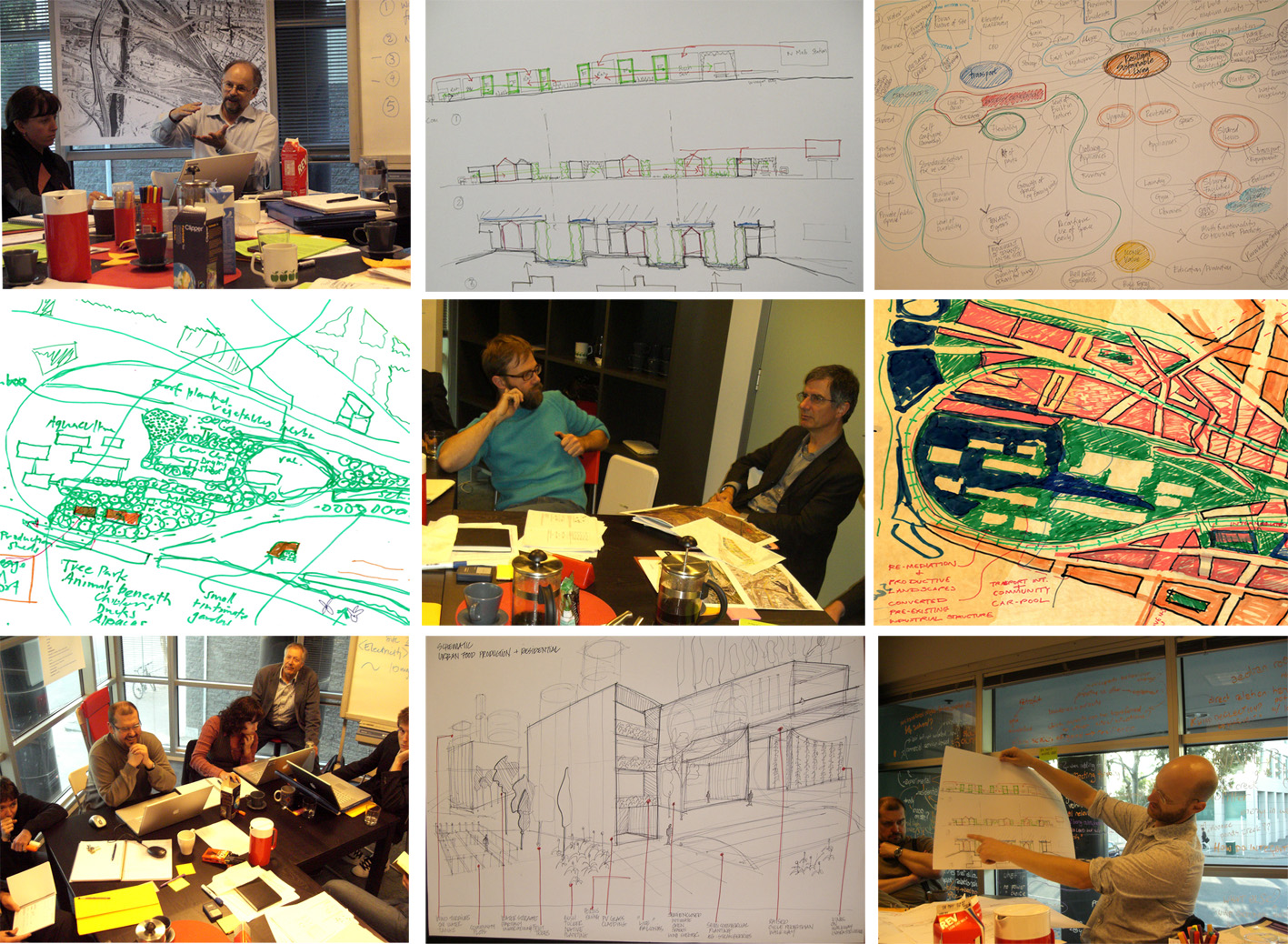EcoCity (EBD): Design Hub
Developing a ‘retrospective history of the next 25 years’
In April 2008, the EBD Design Hub was held, exploring the possibilities for developing an iconic EcoCity on the CBD’s fringes. The goal was to glimpse a mini-city within the city; a new sustainable precinct on an existing site within Melbourne – the 25 h ‘E-gate’ site – to the north of Docklands.
The first VEIL Egate investigations involved eight design staff from the four Universities in a week-long design-research atelier. With input from a wide range of people from various research groups and government departments (MCC, VicUrban, DPCD, SV etc) the VEIL team designed a framework for thinking about the proposed development, breaking with traditional approaches to urban master-planning. These investigations also identified the critical issues, knowledge gaps and innovation possibilities which are currently being explored.
This vision project for VEIL builds on work carried out in its first year of operation (2007). The idea of a large-scale demonstration project responds to political dynamics which are evident in current attempts by government to respond to climate change. In Victoria, there is a rapidly growing awareness that a low-carbon future requires rapid innovation and significant structural change. The idea of a ‘test-bed site’ for experimentation and demonstration of such change is very current.
The results of the first exercise were presented to a number of ‘stakeholders’ including VicUrban, MCC, DSE, DPCD and so on.
The second atelier started on June the 4th, 2008. The resulting work was then used to formulate design studios in Architecture, Industrial Design, Service Design, Landscape and Urban Design and Visual Communication. By the end of the year there was a diverse body of work from talented students across the four universities, extending the vision of what could be a future for EGate, now known as the EBD.
In February 2009, a large and highly public exhibition (original notice) displayed the best of that student work and the VEIL exploration. The aim is to influence future thinking about the site and even, perhaps, to garner enough support to see the implementation of a future development unlike any seen before in Melbourne.
Hub Participants included:
- Gene Bawden, Monash University, Visual Communication
- Brad Haylock, Monash University, Visual Communication
- Mark Richardson, Monash University, Industrial Design
- Simon Whibley, RMIT University, Architecture
- Graham Crist, RMIT University, Architecture
- Ian Wong, RMIT University, Industrial Design
- Kate Bissett-Johnson, Swinburne University, Industrial Design
- Mark Strachan, Swinburne University, Systems & Services Design
- Sidh Sintusingha, University of Melbourne, Landscape Architecture
- Erwin Taal, Aspect Studios
- Ian Woodcock, University of Melbourne, Urban Design
- Darko Radovic, University of Melbourne, Urban Design
- Alan Pears, Sustainable Solutions
- Ursula Tischner, eConcept, Agency for Sustainable Design
- Peter Harper, Centre for Alternative Technology, Wales
Workshop Design & Facilitation: Dianne Moy
Assistant: Kate Archdeacon
